
Leiden archaeologists discover an early form of money from Prehistoric Central Europe
People in the Early Bonze Age used bronze artefacts as a means of payment. This is the conclusion reached by archaeologists Maikel Kuijpers and Catalin Popa in a PLOS ONE article published on 20 January.
Bronze rings, ribs and axes from the Early Bronze Age (ca. 2500 to 1700 BC) were an early form of money that was standardised in shape and weight. 'It was even the earliest form of money in Europe north of the Alps,' says Maikel Kuijpers, assistant professor of European Prehistory. This has been shown by research on over 5,000 collars, rings, axes and ribs, all of which are museum artefacts from the Early Bronze Age that have been found in Central Europe.
Money or not?
It is difficult researching the first use of money because there are often no written sources and prehistoric people did not have precise weighing methods. 'Archaeologists have previously studied whether these objects were used as money, but the findings were often unclear,' Kuijpers explains. ‘We know that objects could only serve as money, or ''commodity money'' as we call it, if they were very similar in shape and weight. But a standard statistical approach isn't vrery effective because it's too precise. There are no clear indications of the use of weighing scales in this area until hundreds of years later. So, we have to assume that people in the Early Bronze Age weighed things by hand.'
-
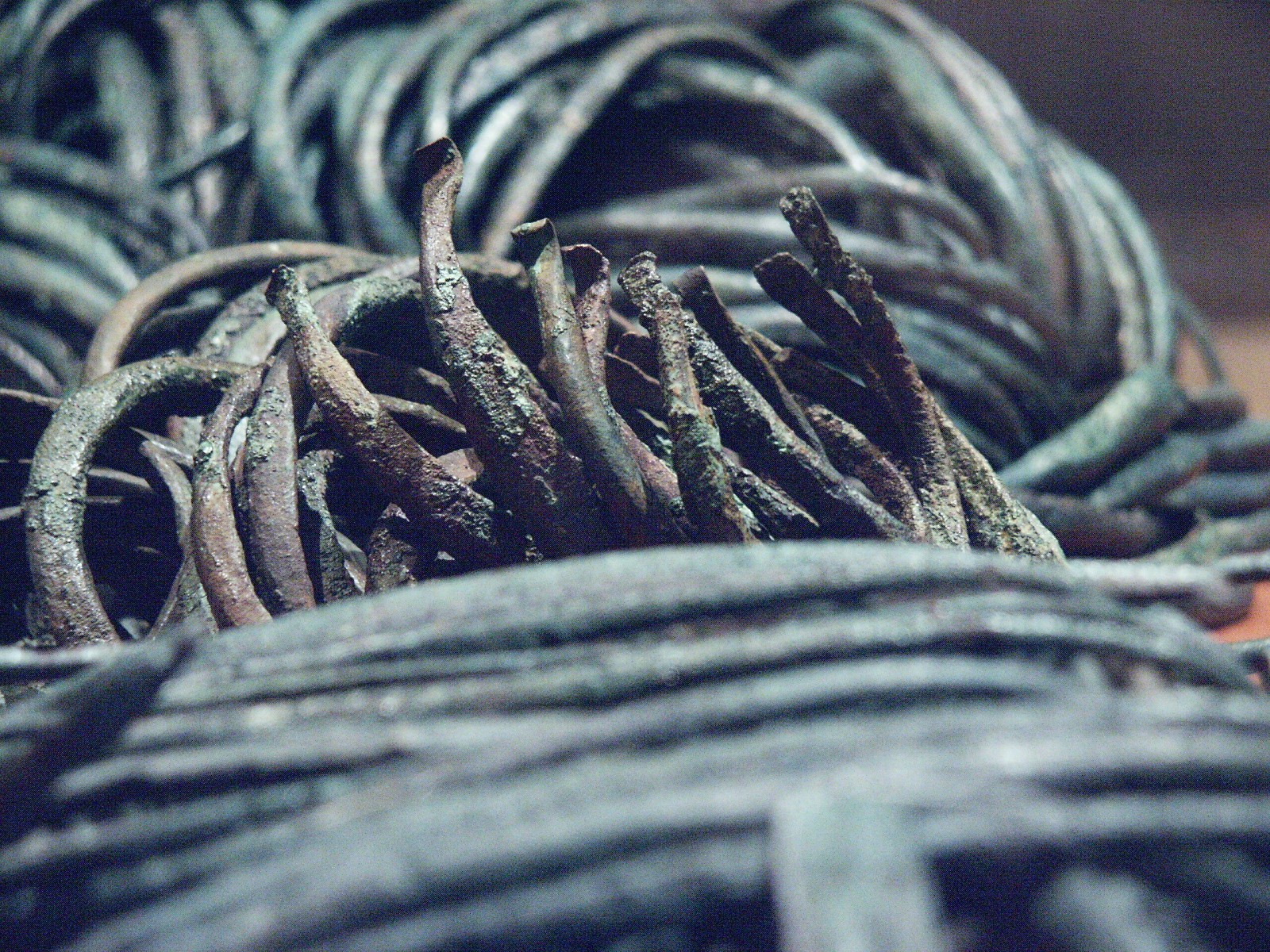
A find of almost 750 bronze rings, weighing around 150 kilos, from Mauthausen (Piding) in Germany. In terms of their weight, little or no distinction can be made in three-quarters of these rings. -
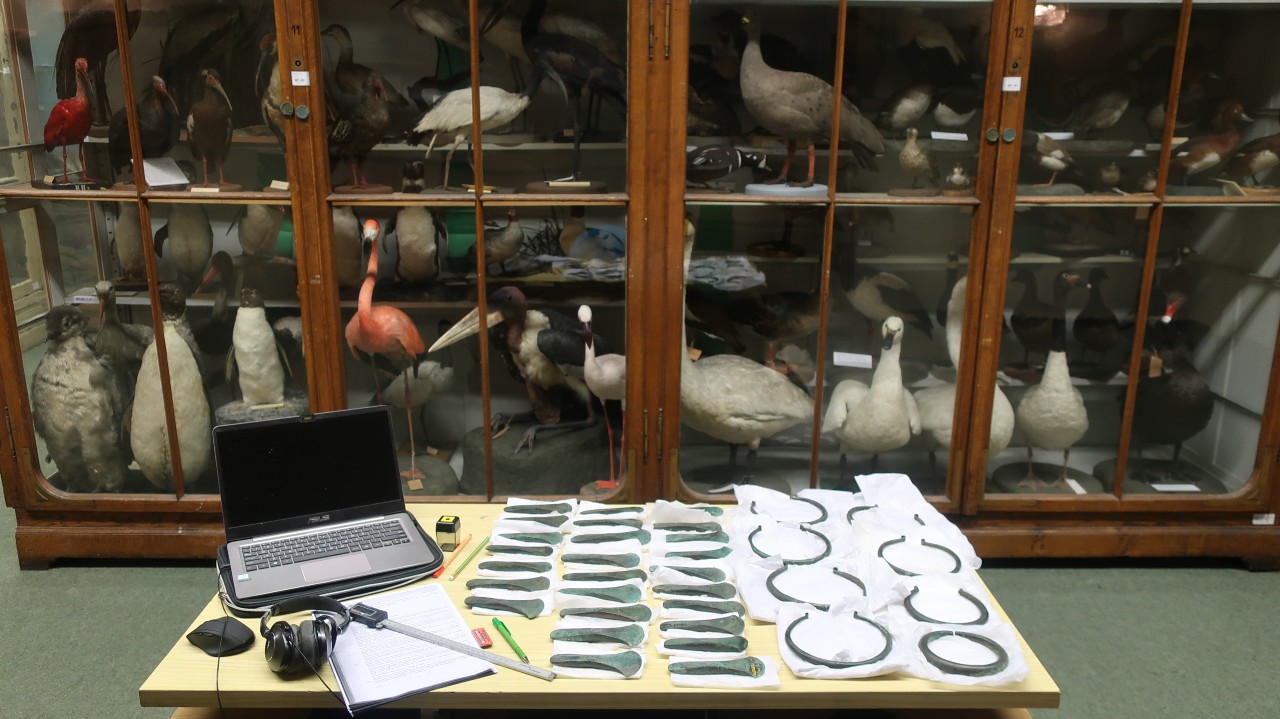
The authors had to work in some unusual places in museums to conduct their research. Here, they are examining axes and rings. -
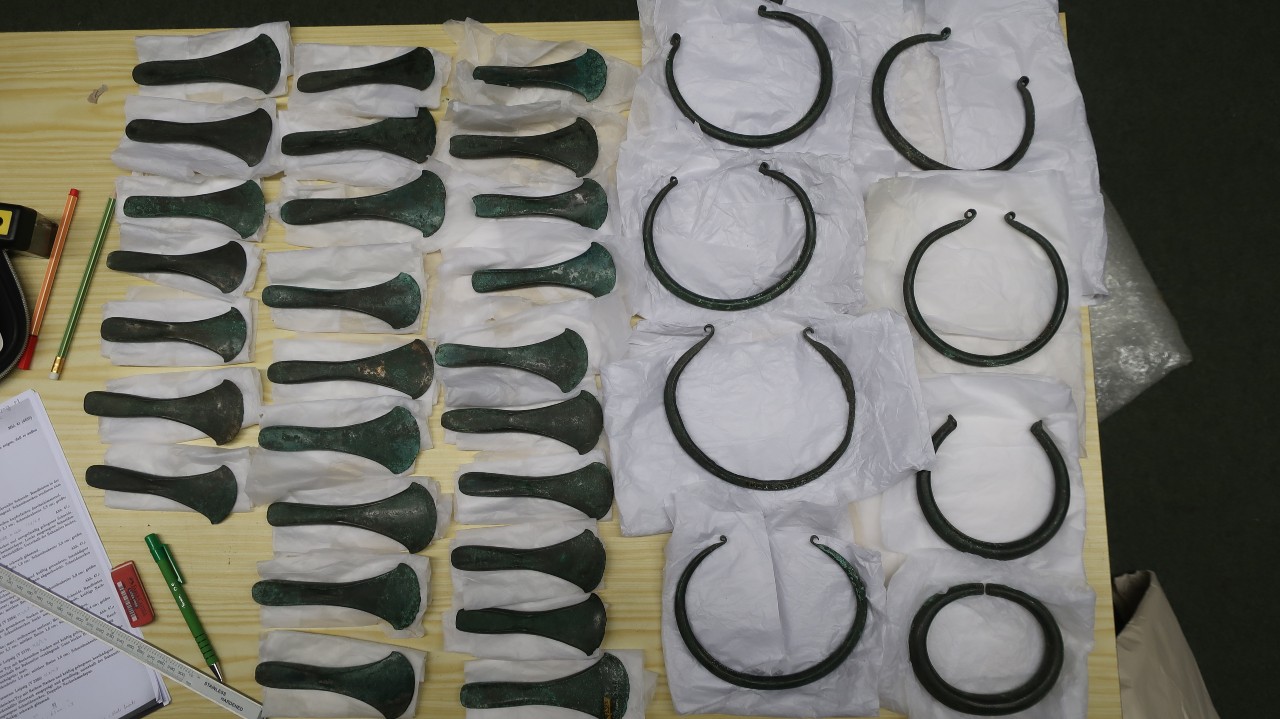
Bronze axes and rings were apparently used as prehistoric means of payment, according to research. -
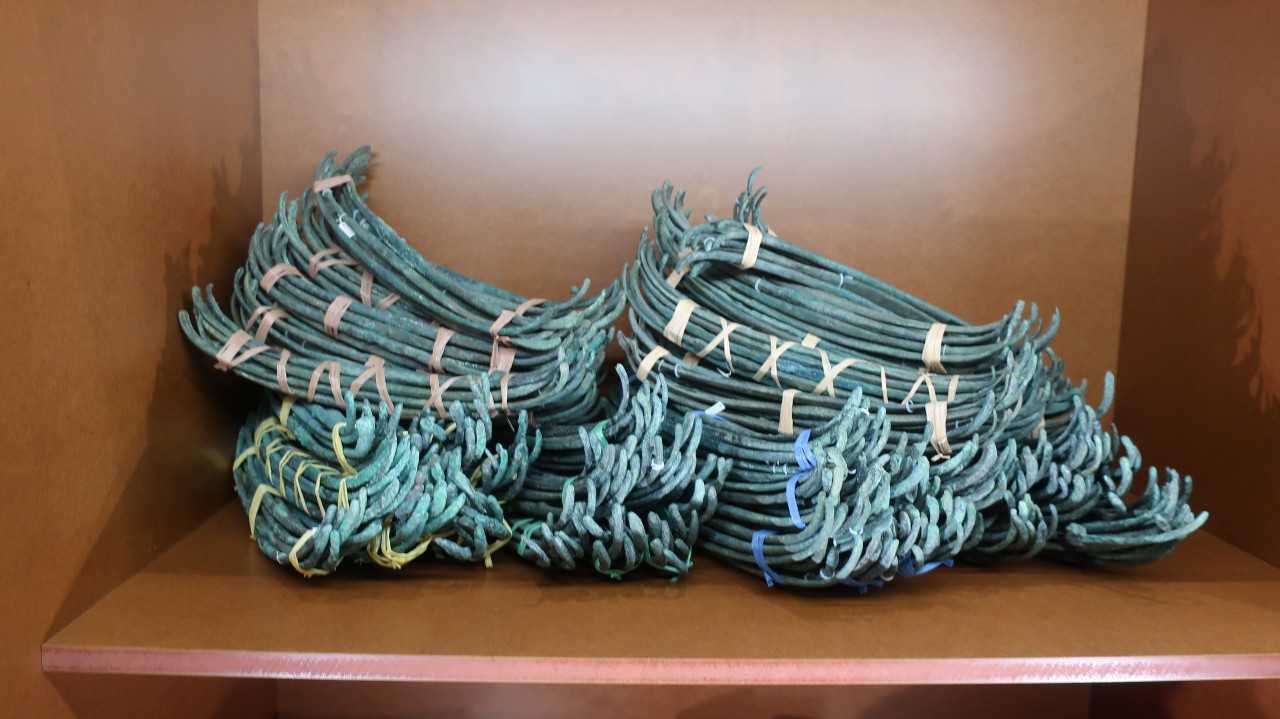
A collection of bronze ribs found in bundles. Oberdingen, Germany. -
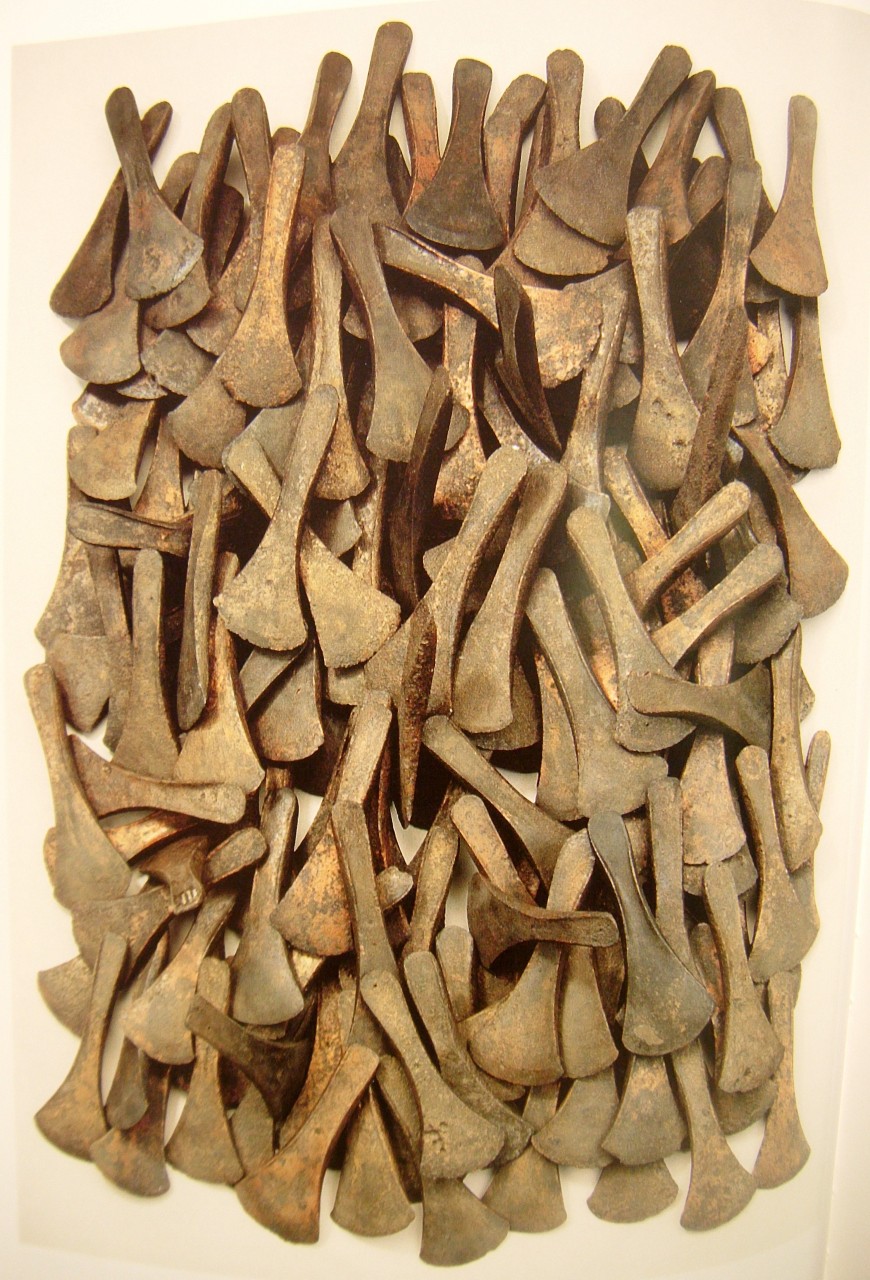
Over 250 bronze axes, found in a pot. More than eighty per cent of these axes are virtually identical in terms of their weight. (Source: Hänsel, B., and A. Hänsel. Gaben an die Götter: Schätze der Bronzezeit Europas, 1997)
Perceived equivalence
Kuijpers and his colleague Catalin Popa developed an alternative statistical approach that calculates whether people were able to tell the difference in weight between the various rings, axes and ribs. These objects were made in such a way that it was impossible - for human senses at any rate - to distinguish among them in terms of weight or shape. ‘Of the more than 2,500 bronze rings, for example, seventy per cent feel identical to a ring of 195 grams,' Kuijpers explains. 'This is a really strong indication that we are looking at an early form of money.' The same applies to the bronze ribs and, to a lesser extent, also to the axes. 'It's a bit like euros today having different images on them, but otherwise being equivalent to one another. You could say that what we have here are the earliest euros.'
Next question: material dimension
Money and weighing systems are fundamental aspects of our society. But knowledge about how these evolved also teaches us about how human thought processes developed. Kuijpers: 'The similarities we have seen with these artefacts are to some extent due to the material itself: bronze. Using a material like bronze you can cast objects in a mould and copy them easily, unlike objects made of stone. This material dimension of cognition is the next question we'll be looking at.'
This research is part of the Economies of Destruction project, subsidised by NWO. (NWO-VICI 277-60-001)
Text: Carin Röst
